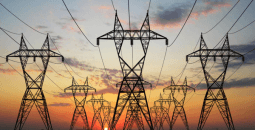

Changed market conditions and use of the electricity system, as well as the need to allocate income correctly internally, have prompted Eskom to update its 2020 application for a changed tariff structure, which may see some customers paying more for electricity and others less.
According to Deon Conradie, a part-time lecturer in tariffs at Wits Business School, Eskom’s industrial clients, who are currently heavily subsidising smaller users, will get some relief if energy regulator Nersa gives Eskom the green light, but farmers and low-volume residential users will have to fork out more money.
Indigent power users will not be affected since they get around 50kWh per month for free, but households relying on solar panels and using the Eskom grid to supplement it when the sun is not shining will be negatively impacted.
Eskom CFO Calib Cassim recently mentioned the proposed tariff restructuring at the Enlit Africa 2024 conference in Cape Town. Moneyweb has learnt that Eskom is still working on the application, a previous version of which was submitted to Nersa in 2020. The regulator did not substantially approve the changes at the time.
Conradie says Eskom conducted a full cost-of-supply study in 2019, which is updated annually.
The current tariff structure does not reflect the true cost of every aspect of its service, nor is the cost correctly allocated to the different customer groups.
That is what Eskom hopes to start correcting should its application be approved.
In addition, the adoption of renewable energy has changed the way the system is used and requires a change in the tariff structure. Those with their own generation who use the Eskom system as backup must pay for it, says Conradie. Currently, other users are subsidising them.
Fixed and variable costs
Conradie says 76% of Eskom’s costs are fixed and 24% are variable. This is not at all reflected in its tariffs, with only 10% fixed and 90% variable and determined by how much electricity is being used.
The utility hopes to start correcting this by increasing the fixed component of the tariff to 24% and reducing the variable component to 76%.
Some of the proposals include:
Eskom hopes to formally submit the application by August. If approved, the changes will be implemented by 2025/26 at the earliest. – bbc.com